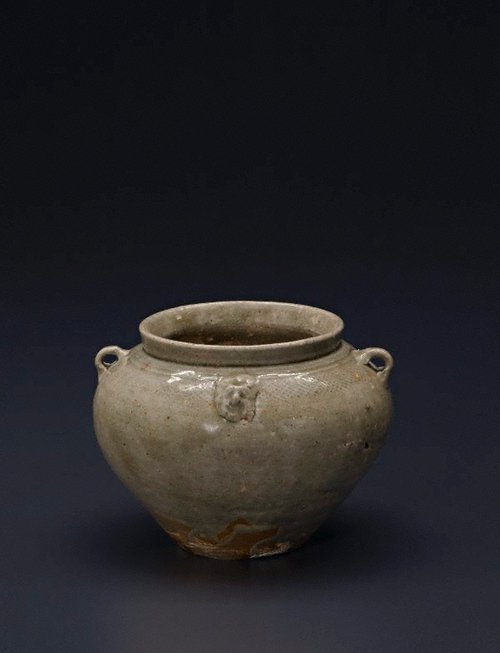


-
Details
- Place where the work was made
-
China
- Period
- Western Jin dynasty 265 - 316 → China
- Media category
- Ceramic
- Materials used
- celadon stoneware
- Dimensions
- 9.9 x 19.0 cm
- Credit
- Purchased 2005
- Location
- Not on display
- Accession number
- 133.2005
- Copyright
- Artist information
-
Yue ware
Works in the collection
- Share
-
-
About
During the period of the Three Kingdoms and Western Jin dynasty (220-316), ceramics produced at the Yue kilns of northern China were popularly potted in the form of lively animals. The rare frog-shaped water pot is an outstanding example of this kind. It shows an ovoid body with a slightly everted foot-rim enclosing a flat base. The frog, applied to the water pot's body in high relief, has a tight mouth, open and protruding eyes and squatting legs. On its back is a circular opening with a low mouth rim in a roped form. The body is decorated with small impressed circles and applied medallions. A transparent green glaze covers the surface of the pot, stopping unevenly above the foot. The water pot demonstrates that green glazed stoneware reached new heights in quality and complexity in the Western Jin.
-
Places
Where the work was made
China
-
Exhibition history
Shown in 2 exhibitions
Conversations through the Asian collections, Art Gallery of New South Wales, Sydney, 25 Oct 2014–13 Mar 2016
Open Studio (brick vase clay cup jug), Art Gallery of New South Wales, Sydney, 01 Jul 2023–07 Jan 2024
-
Provenance
El Camino Antiques - Art & Accessories, Jun 2005, California/United States of America, purchased by the Art Gallery of New South Wales, Sydney, Jun 2005.



